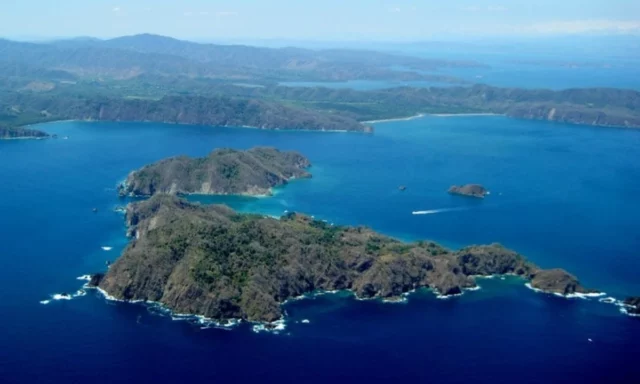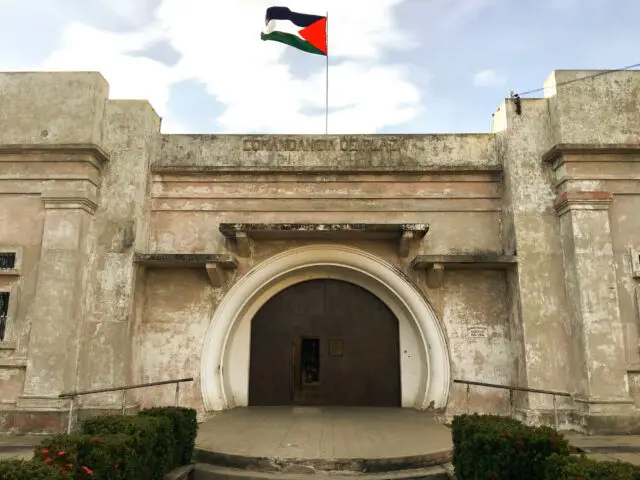The cantons of the province of Guanacaste offer a varied menu of tourist attractions that combine exuberant beaches together with cultural traditions deeply rooted in the national culture; in addition, national parks and natural reserves that satisfy a wide range of tastes for national and foreign visitors.
Nicoya
It is the second canton in the province of Guanacaste and one of the first 13 cantons that the country had. It was the land of Chorotega Amerindians until the Spanish arrival in 1520.
It is known by some as the Colonial City of Costa Rica. Landmarks and Cultural Icons: Playa Samara is known for its long stretch of white sand with gentle waves, the gradual slope makes the water levels shallow, it has one of the largest coral reefs in Costa Rica and offers great diving opportunities.

The Church of San Blas is the oldest in Costa Rica dating from 1644, declared of historical-architectural interest on November 6, 1995.
It is the cradle of the Barra Honda National Park with an extension of 2,295 hectares, it is the only one in Costa Rica that has a complex of underground caverns. Recently, at the top of the hill of La Cruz, the image of a Christ the Redeemer was placed.
The Festival of “Our Lady Virgin of Guadalupe”, which is estimated to be about 478 years old, is characterized by bringing together ancestral stories, culinary elements representative of the Nicoyan region, as well as a variety of dances and music; aspects that, as a whole, characterize intangible cultural heritage; declaration that it has had since 2014.
Hojancha
It is the most recently created canton of the province. The origin of the name is due to a tree located in the region, which the natives called Wide Leaf, due to the very special characteristics of the size of its leaves. The first settlers who arrived in the region in 1910 came from Matambú and the cantons of San Ramón, Atenas and Palmares, among whom were the families Combination of Beach, culture and environment: Guanacaste abounds in tourist attractions.Rincón de la Vieja National Park, Pailas sector of Mr. Barrantes, Bermúdez, Guzmán, Mora, Quesada, Quirós, Venegas among others.
Sites of interest and cultural icons: According to GoPlaya, Playa Carrillo is a place of white sand and few stones, ideal for resting, tanning under the sun or enjoying a walk. Over time, it has become an ideal place for bathers due to its gentle waves.
The “SomosHojancha” brand points to attractions such as the “Salto delCalvo” waterfall -one of the highest in Central America-, the Monte Alto reserve and viewpoints overlooking the Gulf of Nicoya. Matambú, the only indigenous territory in the province, appears on the list of cultural potential.
Santa Cruz
Description: Precisely in what is now Santa Cruz, Gil Gonzales Dávila found the Chorotega leader Cacique Diriá and his subjects established. It can be deduced that in 1522 there was already a fairly important aboriginal town in what is now Santa Cruz, mainly due to its geographical location, being located between the Diriá and Enmedio rivers. It is known as the folkloric city.

Sites of interest and cultural icons: Its coastline is known as the Costa Dorada due to its beauty and the number of beaches. One of the most visited is Playa Tamarindo, which offers a wide variety of activities and prices for all budgets. In the cultural and religious field, the devotion to the “Santo Cristo de Esquipulas” stands out. It is considered that Mrs. Bernabela Ramos played a very important role in promoting religious worship and initiating devotion to the “Santo Cristo de Esquipulas”.
This lady brought the priest from Nicoya to celebrate mass at her home once a month, creating a meeting place and favoring the concentration of people in ParajedelDiría.
The community of Guaitil, better known as the “cradle of Chorotega crafts”, is located in the Diriá district. Guaitileños have developed economically thanks to the local sale of their products, rooted in the customs and legacies of their ancestors. Its ancestral legacy is still preserved in Chorotegan crafts made with raw materials from the land.Precisely, on August 12, 2013, this craft was declared as Intangible Cultural Heritage of Guanacaste.
Carrillo
The name of the canton is due to a tribute to the former head of State Mr. Braulio Carrillo Colina (1835-1837 and 1838-1842); who was born in the city of San Rafael de Oreamuno, on March 20, 1800 and died in El Salvador on May 15, 1845. The Legislative Assembly by agreement No. 1091 of April 28, 1971, declared him Meritorious of the Homeland and Architect of the Costa Rican State.
On May 15, 1972, his remains were transferred from San Miguel, El Salvador to his hometown where they were buried in the local park. Sites of interest and cultural icons: It has beaches of great beauty such as: Playa Buena. Ocotal Beach, Calzón de Pobre Beach, Panama Beach, Coco Beach, Penca Beach, Matapalo Beach and Zapotal Beach. The Tempisque River that crosses the Canton and passes through the City of Filadelfia, where you can practice water sports such as fishing and sailing, up to the Gulf of Nicoya, crossing the most impressive vegetation and observing the various species of flora and fauna that are around it.
A variety of pieces dating back thousands of years have been found in Carrillo; for this reason, it is known as the “National Archaeological Canton”. According to the North American archaeologist, Doctor Federick Lange, these riches come from 800 B.C. Up to 1,500 AD pieces belonging to the early, middle and late polychrome periods. The cross. Description: This canton limits to the north with Nicaragua and is where the border post with this country is located, PeñasBlancas.
Sites of interest and cultural icons:
La Cruz is located on the shores of what is now known as the Mirador de La Cruz, from where you can see wonderful and impressive sunsets. This point of view, the Santa Rosa National Park and the Coastal Tourist Corridor are its main tourist attractions, where the Casona de Santa Rosa stands out, preserved since the mid-nineteenth century, the which is a monument to the history of the country. For its part, the La Cruz Coastal Tourist Corridor (CTC) is a scarcely explored natural treasure.It is recognized for its great geological, archaeological, historical, landscape and biological wealth.
This is one of the few places in the world where you can see the layers of the earth’s crust out of the sea. The coastal tourist corridor culminates in Cuajiniquil, where sport fishing is unique in the area, as well as diving, snorkeling, from where you can visit Isla Muñecos, or Bahia Santa Elena, there are also bird watching tours in mangroves and by boat. The beaches of La Cruz are marvelous, being the best known: Junquillal, Cuajiniquil, El Jobo, Rajada, Salinas and Manzanillo Bay. Santa Rosa has some of the most beautiful beaches in Costa Rica that are almost virgin since their access is very difficult by land.
Liberia
Liberia is the first canton of the Guanacaste province. It arose in the second half of the 17th century, on September 4, 1769, with the name of the town of Guanacaste. The city of Liberia is often called the “White City” because in the past its streets were made of “gravel”, a whitish powdery material.
Sites of interest and cultural icons:
Rincón de la Vieja Park was created by Law No. 5398 of October 23, 1973. Its extension is 14,300 hectares. It is divided into two tourist visitation sectors: Las Pailas and Santa María. Both sectors have interesting attractions due to the importance of their ecosystems and in which the volcanic manifestations stand out.

The city has the Museum of Guanacaste; In addition, Cabuyal beach located on the Papagayo Peninsula, is 45 minutes from downtown Liberia. The Daniel Oduber International Airport is located in the canton. It is advisable to visit the canyons of Curubandé. The Tope de Toros, one of the oldest traditions in Liberia, was declared an intangible cultural heritage in February 2013. Its origins date back to the 1800s, on the cattle ranches that gave rise to Liberia.

